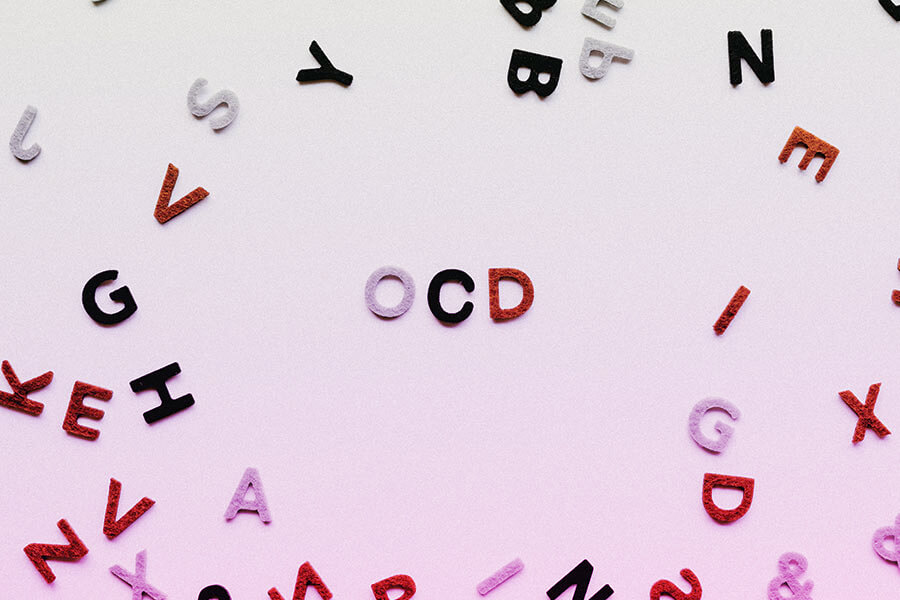OCD in Children Symptoms: Signs, Support & Treatment

OCD is a chronic mental health condition—an anxiety disorder—characterised by intrusive thoughts, images or urges (obsessions), followed by repetitive behaviours (compulsions) aimed at relieving intense distress. Obsessive-Compulsive Disorder (OCD) is often associated with adults, but children—even toddlers and preschoolers—can also develop OCD. In fact, experts estimate that OCD affects roughly 2–3% of children, and it often runs in families, . Recognising the signs of OCD in children early is crucial for getting them the support they need in both life and education. As a parent, understanding childhood OCD symptoms can help you intervene sooner and ease your child’s challenges. Understanding OCD in children is key to supporting their emotional wellbeing and academic progress. While it’s normal for children to have routines or fears, OCD goes far beyond typical childhood worries. At Powertutors, we work closely with many children who have Special Educational Needs and Disabilities (SEND), so we understand the difficulties parents face when a child has OCD.
What is OCD?
OCD is a chronic mental health condition characterised by intrusive obsessive thoughts and repetitive compulsive behaviours. These unwanted thoughts (obsessions) cause significant anxiety and distress. To relieve this anxiety, a child with OCD might engage in specific rituals or actions—called compulsions—that they feel driven to perform. In short, the child may feel that something bad will happen unless they do these behaviours, creating a cycle of anxiety and temporary relief. While OCD often begins around adolescence, it can affect younger children too. (Some people start showing symptoms as early as age 6, though this is less common.) Children with OCD often experience persistent obsessive thoughts, images or urges—for example, worries about contamination or fear of harm to loved ones. These intrusions can be vivid and upsetting, significantly different from normal childhood worries.
Signs and Symptoms of OCD in Children
Recognising OCD in children can be challenging, because some level of worry and ritual is normal in kids. Young children often have little routines or habits that comfort them, like bedtime rituals or favourite ways of organising toys. When those rituals become upsetting instead of comforting, however, it could signal OCD. OCD frequently leads to reassurance seeking—constantly asking ‘Am I OK?’, ‘Did I do it right?’ or seeking approval from parents and teachers to ease the anxiety triggered by intrusive thoughts. Early OCD signs are easily overlooked as “just a phase” or personality quirks. However, there are some common behaviours that may indicate OCD rather than typical childhood behaviour:
- Excessive fear of germs or contamination – leading to frequent, compulsive hand-washing, bathing, or cleaning of items.
- A need for symmetry and order – for example, insisting that toys, clothes, or objects are arranged “just right” and becoming very upset if things are moved.
- Compulsive checking – repeatedly checking that doors are locked, appliances are off, or homework is “perfect,” due to an irrational fear that something bad might happen if they don’t check.
- Repeating words or phrases – saying certain words, questions, or prayers over and over (either out loud or under their breath) because it “feels right” or seems to prevent something bad.
- Avoidance of specific situations – refusing to touch certain objects, go to certain places, or engage in activities that might trigger their obsessive fears (for instance, avoiding playground sand for fear of germs).
- Strict rituals or routines – performing actions in a particular sequence or a set number of times (such as tapping, counting, or blinking in a pattern) in order to feel safe or relieve anxiety.
Remember, the key to identifying OCD is the persistence and intensity of these behaviours. Normal childhood routines are usually flexible and comforting, whereas childhood OCD symptoms tend to be extreme, time-consuming, and cause distress if interrupted. Each child’s OCD may look a little different, so trust your instincts if something feels “off.” If you notice potential OCD behaviours that take up a lot of time (e.g. more than an hour a day) or significantly interfere with your child’s daily life, it’s best to seek professional help for an official diagnosis. Early recognition is important, because OCD symptoms in children often intensify over time if not addressed.
OCD in Preschoolers: Early Signs in Younger Kids
The experience of children with OCD can be deeply distressing. OCD is less common in very young children, but it can occur even in toddlers or preschoolers (though rare). Typically, OCD first appears around ages 8–12 or in the teens, but some preschool-aged children do show signs. At such young ages, OCD can be hard to distinguish from normal toddler behavior. Little kids often line up toys or insist on routines, which by itself is usually normal and not a sign of toddler OCD. The red flags are when a young child’s behaviours are driven by intense fear or anxiety rather than playfulness.
For example, a preschooler with OCD might have an obsession with cleanliness or germs, leading them to wash their hands excessively, far beyond typical “messy play” cleanup. They may have an extreme need for order and get very upset if a routine is disrupted or a toy is out of place. You might see a small child performing repetitive actions (like touching a doorframe exactly three times before bed) and melting down if they can’t do it. Of course, tantrums and rigid behaviours can happen in any 3- or 4-year-old; the difference is that with OCD the behaviours seem driven by fear (“something bad will happen if I don’t do this”) and are very hard to soothe. If you suspect OCD in a toddler or preschooler, talk to a paediatrician or child psychologist. Early intervention, even at a young age, can prevent the symptoms from worsening and help your little one learn coping skills.
School Support and Accommodations for Children with OCD
An official OCD diagnosis can open the door to specific support at school. Working with your child’s school – typically through teachers or a Special Educational Needs Coordinator (SENCO) – can greatly help your child manage OCD in the classroom. With a formal diagnosis, you can discuss reasonable accommodations to reduce your child’s anxiety and help them succeed academically. Some ways that schools can support a child with OCD include:
- Adjusted seating arrangements: If certain sights or sounds trigger your child’s obsessions (for example, sitting near a trash can might trigger germ fears), the teacher can seat your child in a spot with fewer triggers or distractions.
- Exam accommodations: Many students with OCD qualify for extra time on tests or the option to take exams in a separate, quiet room. This reduces anxiety and pressure, allowing a more accurate display of their knowledge and abilities.
- Flexible scheduling or deadlines: When OCD symptoms are severe, a school might allow slight flexibility – for instance, letting a child arrive a few minutes late if morning rituals delayed them, or providing extensions on homework during difficult periods. The goal is to reduce stress without excusing the schoolwork entirely.
- Access to support staff: Schools can arrange for your child to meet regularly with a counselor or support teacher who understands OCD. This gives your child a safe space during the day to talk about anxieties or practice coping strategies.
- Formal support plans (EHCP): If your child’s needs are significant, consider pursuing an Education, Health and Care Plan (EHCP). An EHCP is a formal document in the UK that outlines your child’s needs and the support the school must provide (for example, therapy sessions or special accommodations). Having an EHCP ensures everyone is on the same page regarding your child’s support. (You can read more about how schools support special needs in our Powertutors [Understanding SEN guide].)
School support can make a big difference in easing your child’s day-to-day anxiety. Don’t hesitate to communicate with your child’s teacher and school officials about what triggers to avoid and what support helps your child best. With the right accommodations, children with OCD can feel more comfortable at school and stay engaged in learning despite their challenges. It’s important to remember that people with OCD, including children, can manage their symptoms effectively with tailored strategies. Early recognition and support—both at home and in school—can make an enormous difference.
How Parents Can Help at Home
Supporting a child with OCD can sometimes feel like a delicate balancing act. Every child is different, and the same methods won’t work for everyone. However, there are several strategies that many families find helpful. While you should follow the guidance of professionals, you can start using the following approaches at home even while you wait for an official diagnosis or therapy:
Open Communication
Create a supportive environment where your child feels comfortable talking about their obsessions and compulsions without fear of judgment. Encourage them to share what kinds of thoughts are bothering them or what rituals they feel they need to do. When they do open up, listen calmly and validate their feelings. Let your child know that you understand they might feel scared or embarrassed, but that their feelings are valid. Emphasise that you are there to help, not to scold or shame. For example, you might say, “I know that touching the doorknob twice helps you feel less worried. I’m not angry about it—I just want to understand so I can help you.” By keeping communication open and non-judgmental, your child will be more likely to tell you when something is bothering them, which is the first step to addressing it.
Encourage Healthy Habits
Good overall habits can improve mental health and make OCD symptoms a bit easier to manage. Ensure your child gets regular exercise, whether it’s playing outside, riding a bike, or any activity they enjoy – physical activity can reduce anxiety and boost mood. Maintain a balanced diet and try to keep meal and snack times nutritious and consistent (high sugar or caffeine, for instance, can sometimes heighten anxiety in sensitive kids). Just as important is adequate sleep: set a calming, consistent bedtime routine so your child gets the rest their brain needs. When kids are well-rested, they’re better equipped to cope with stress and intrusive thoughts. You might also introduce simple relaxation techniques, like deep-breathing exercises or listening to soft music before bed. Building these healthy habits gives your child a strong foundation for managing OCD.
Practice Patience
Dealing with OCD is not easy – your child will likely have good days and bad days. As a parent, patience is key. Understand that progress may be slow and non-linear. Try not to express frustration if a compulsion or obsession resurfaces; remember that your child isn’t being difficult on purpose, the OCD is driving their behavior. Celebrate small victories and improvements, no matter how minor they seem. For example, if your child usually washes their hands 10 times but today managed with 8 times, acknowledge that success (“I’m proud of you for trying to cut back, that’s a great step forward!”). This positive reinforcement builds your child’s confidence and motivation to try coping skills. On tougher days when OCD behaviours seem overwhelming, remind your child (and yourself) that improvement takes time and consistency. By staying calm and patient, you provide a safe, supportive atmosphere – a crucial comfort when your child is struggling with anxious feelings.
Learn More About OCD
Take time to educate yourself about OCD from reputable resources, and consider sharing some of this learning with your family. The more you learn about OCD, the better you’ll understand what your child is going through and how to help. Read articles or books on childhood OCD symptoms and effective parenting approaches. You might discover new strategies (for example, reward systems or games that therapists use) that you can discuss with professionals. Knowledge will also help you advocate for your child at school or in medical settings. Additionally, help your child understand their OCD in an age-appropriate way. Explain that OCD is a known condition – basically, their brain sending “worry messages” that lots of other kids get too. Emphasise that it’s not their fault and they’re not alone in feeling this way. Children often feel relief in knowing there’s a name for what they feel and that others have it as well. By educating yourself and your child, you demystify OCD and chip away at the shame or fear that can come with it.
Seek Professional Help
If you suspect your child has OCD, don’t hesitate to involve a professional. A mental health professional (such as a child psychologist or psychiatrist) can provide an accurate diagnosis and guide you on a treatment plan. Therapy is typically the first-line treatment for pediatric OCD. In particular, Cognitive Behavioural Therapy (CBT) – especially a form of CBT called Exposure and Response Prevention (ERP) – is considered the most effective therapy for OCD. In ERP therapy, a trained therapist gently exposes your child to the source of their obsession in small steps and helps them practice resisting the compulsion. For example, if a child is afraid of germs, therapy might involve touching a slightly “dirty” object and then not washing immediately, teaching the child that nothing terrible happens if they don’t perform the ritual. Over time, ERP can greatly reduce anxiety and OCD behaviours. In some cases, especially if a child’s OCD is severe or not improving with therapy alone, medication may be recommended to take alongside therapy. Certain medications (often low-dose antidepressants that help regulate serotonin) have been found to help manage OCD symptoms in children. Any medication decision would be made by a medical professional in consultation with you, the parent. With the right combination of therapy and support (and medication when appropriate), most children with OCD can be treated successfully and go on to lead normal, happy lives. The key is to reach out for professional help so that you and your child have guidance on this journey.
By understanding that OCD is more than just needing things ‘just so’, and recognising how thoughts, images or urges drive compulsive rituals, parents can better support routines and reduce reassurance seeking. This compassion—typical of supporting people with OCD—combined with professional guidance for this anxiety disorder, is the cornerstone of effective home-based support.



